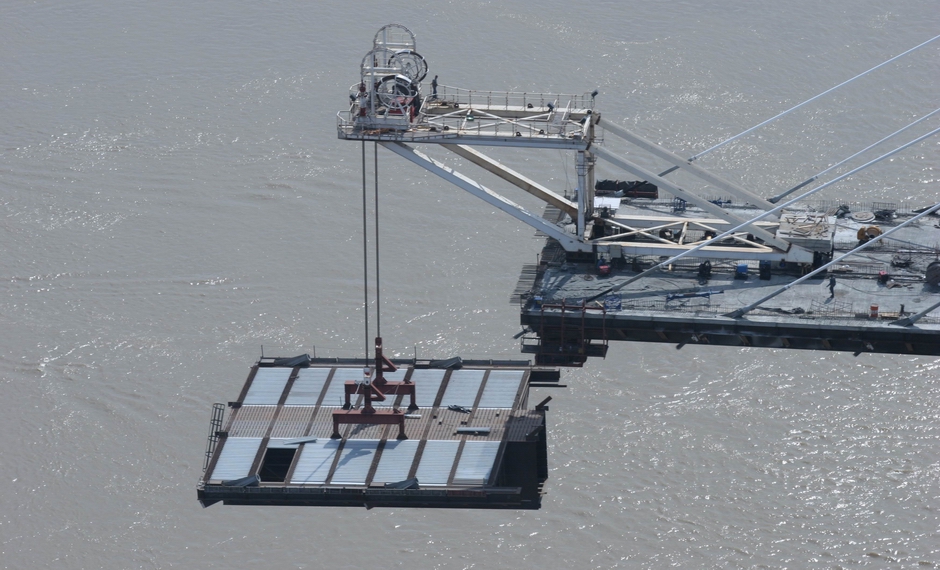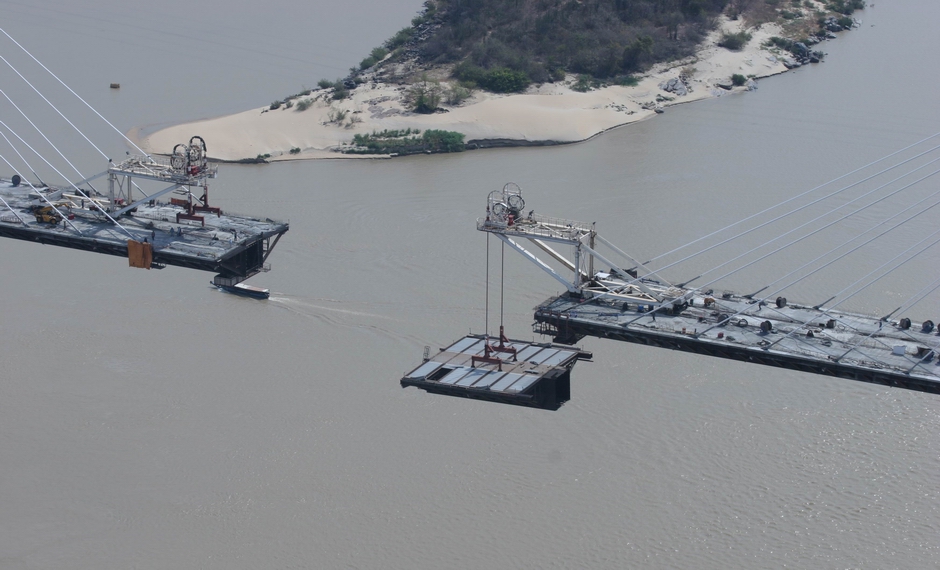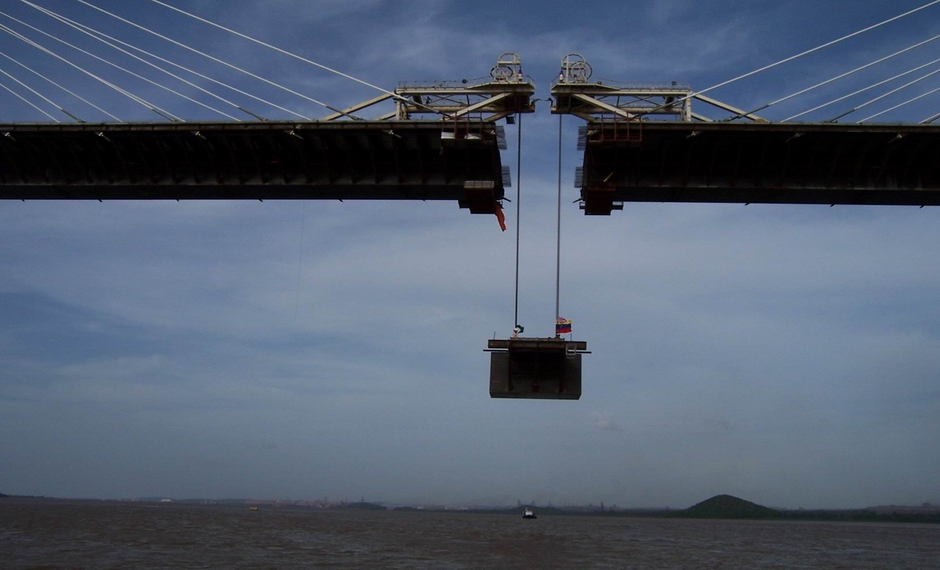Reference Project
Construction Engineering
Site Services
The second crossing of the Orinoco River in Venezuela is 3.12 km long and has 2 No 300m cable stay spans over the navigation channels. The bridge has a steel box girder deck along its full length which was erected by launching in the North & South approach spans and by a combination of lifting and skidding in the main cable stayed spans and 4 x 60m central spans. Deck erection commenced in January 2005 and was completed in June 2006. All the deck erection operations were performed using the strand jacks systems supplied, maintained and operated by DLT, under sub-contract to the main contractor Construtora Norberto Odebrecht S.A.

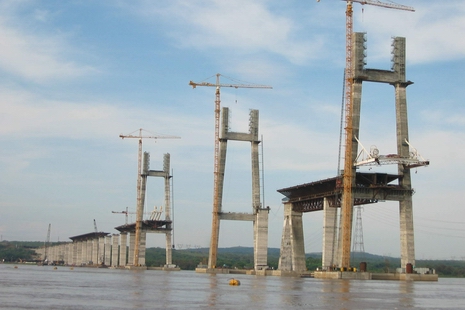
Approach spans
The steel deck for the approach spans was divided into 8 No sections, of up to 300m long and weighing up to 2400 tonnes, for assembly behind the North & south abutments and for launching separately into final position - a launch distance of up to 1.53 km. A pair of DL-S185 strand jacks, 185MT capacity each and powered form a single DL-L30/2/E power pack, were connected to each deck section (see below) and pulled along 120m long static strand cables anchored to the top of forward piers to launch the deck sections forward at a speed of 17 m/hr. After each 120m of launch (2 x 60m spans) the two strand cables were winched forward two spans to allow the launch to continue. The two span launch of 120m was generally carried out in a single 10 hour shift.
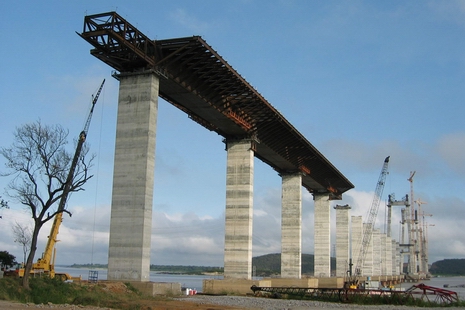

Central 4 x 60m spans
The deck of the 4 No 60m central spans between the two cable stayed spans
were erected in segments of 250 tonnes which were delivered by barge to
the foot of the main pylons and then lifted onto temporary skid track
trusses before being moved into final position, aligned and then welded
together to form the finished deck. The cantilever gantry show below was
used to lift these deck segments from the delivery barges and transfer
them to the temporary skid track. 2 No DL-S185 strand jacks were used
for lifting, powered from a single DL-L30/2/E power pack for a lift speed
of 17 m/hr, and 4 No DL-S60 strand jacks were used for horizontal skidding
of the fully loaded lifting girder. The DL-S60 strand jacks were mounted
onto the lifting girder (see below right) and pulled in either direction
along a static strand. They each took a 15 l/min feed from the DL-L30/2/E
power pack for a movement speed of 15 m/hr.


Cable stayed spans
The deck of the two 300m cable stayed spans was erected in 12m long 250
tonne segments by specially designed self launching deck erection gantries
as shown below. Each gantry used 2 No DL-S185 strand jacks for lifting
powered from a single DL-L30/2/E power pack for a lift speed of 17 m/hr.
Each deck unit was delivered by barge into position for lifting and was
then lifted to just above final level using the DL-S185 strand jacks.
Deck units were lifted with a nominal 500mm gap to the previously erected
deck unit. The strand jacks and deck unit were then skidded together by
hydraulic rams to close and align the deck joint. Finally, the hydraulic
bleed system incorporated in the DL-S185 strand jacks was used to very
slowly lower the deck unit to final alignment to within +/- 1mm tolerance.
The deck unit was then held on the strand jacks whilst the joint was bolted
and welded.
